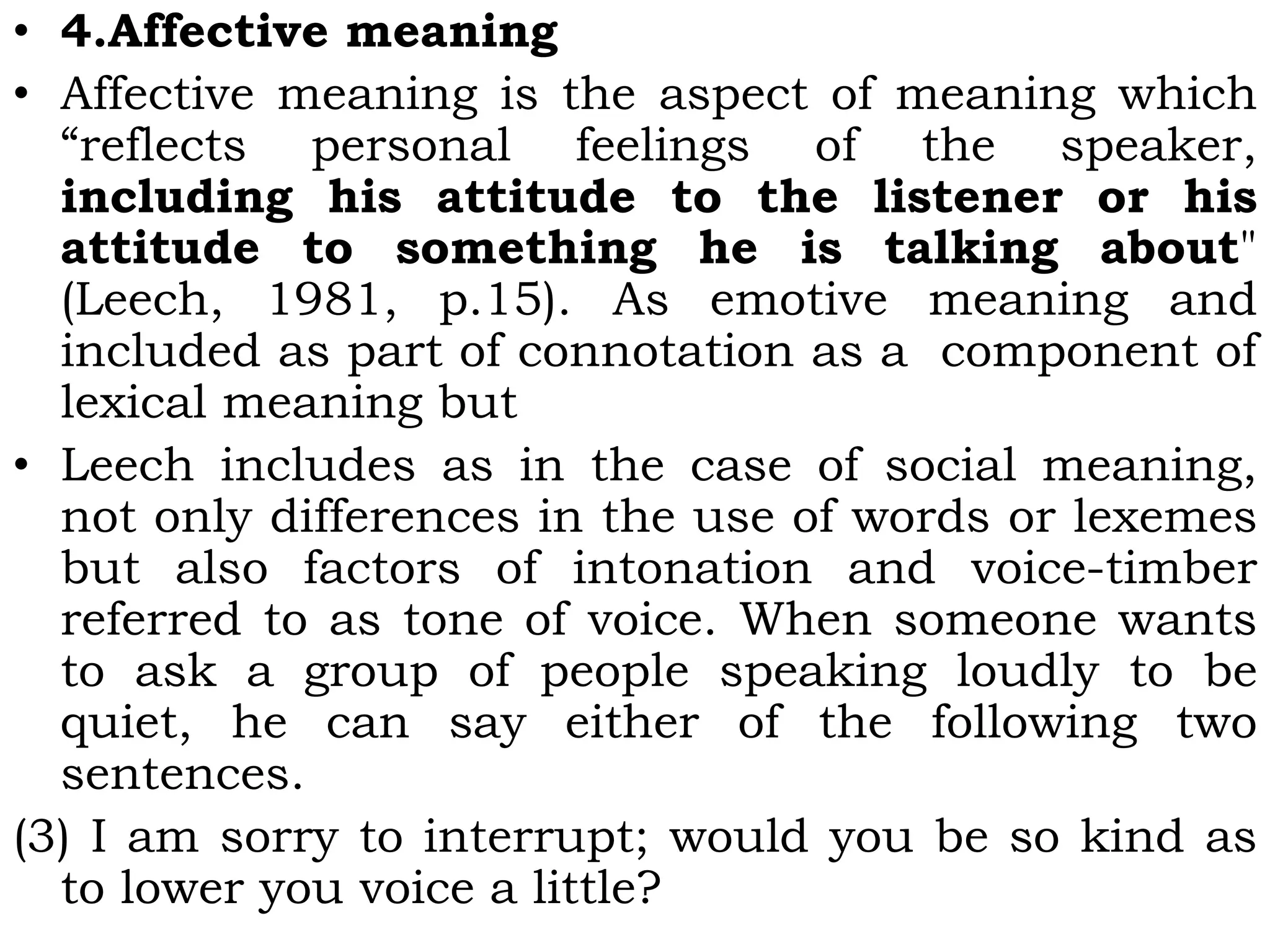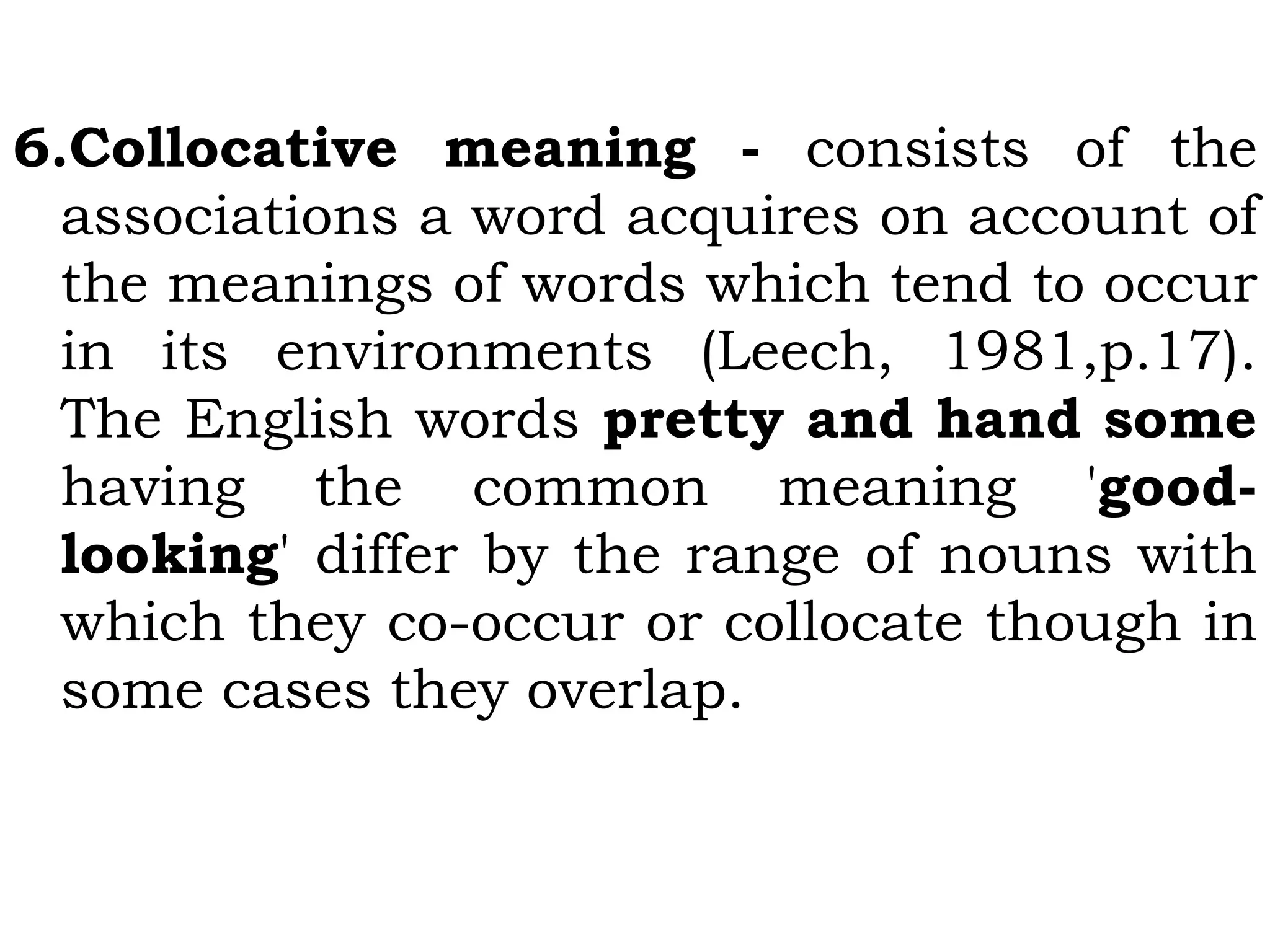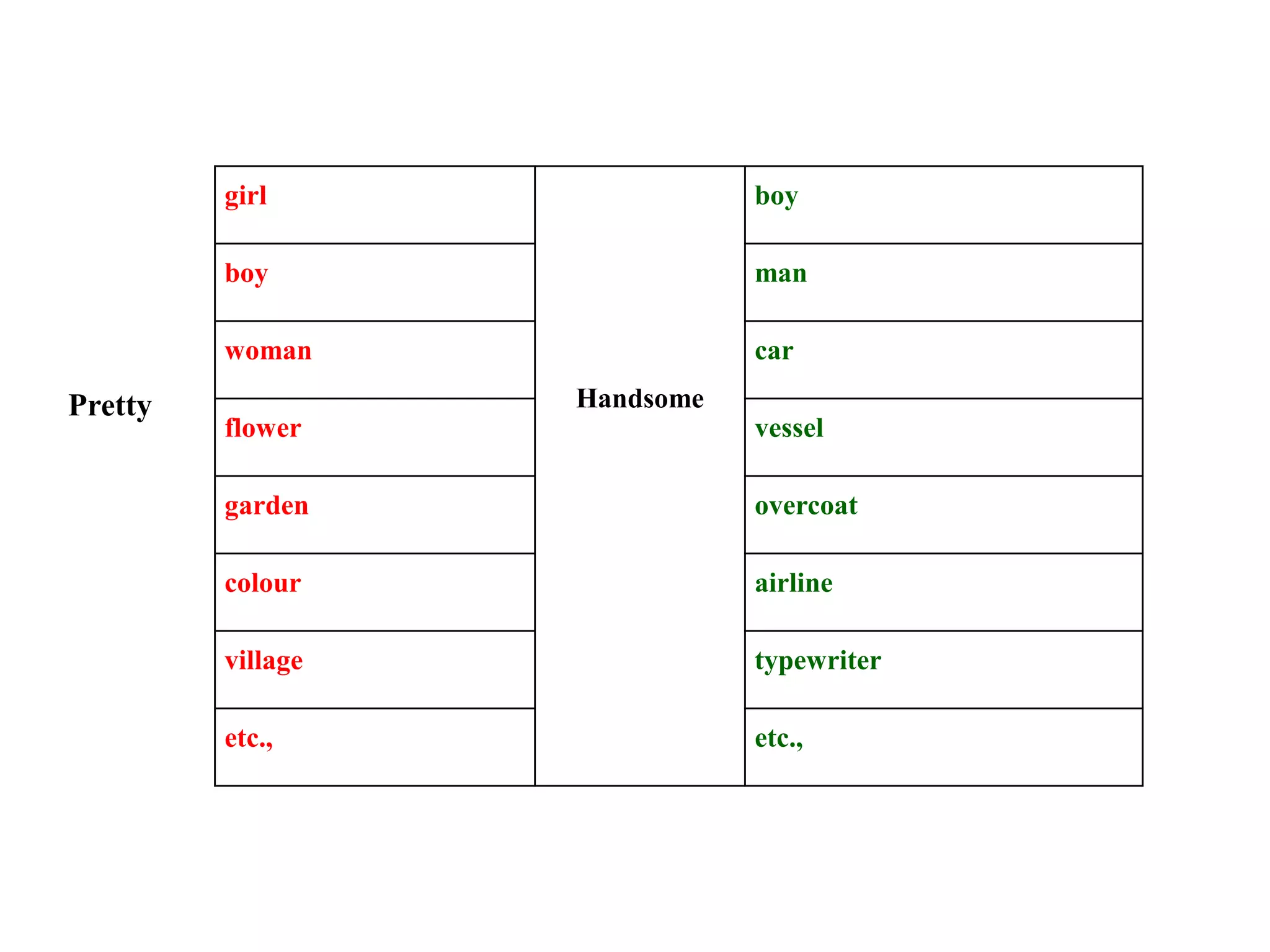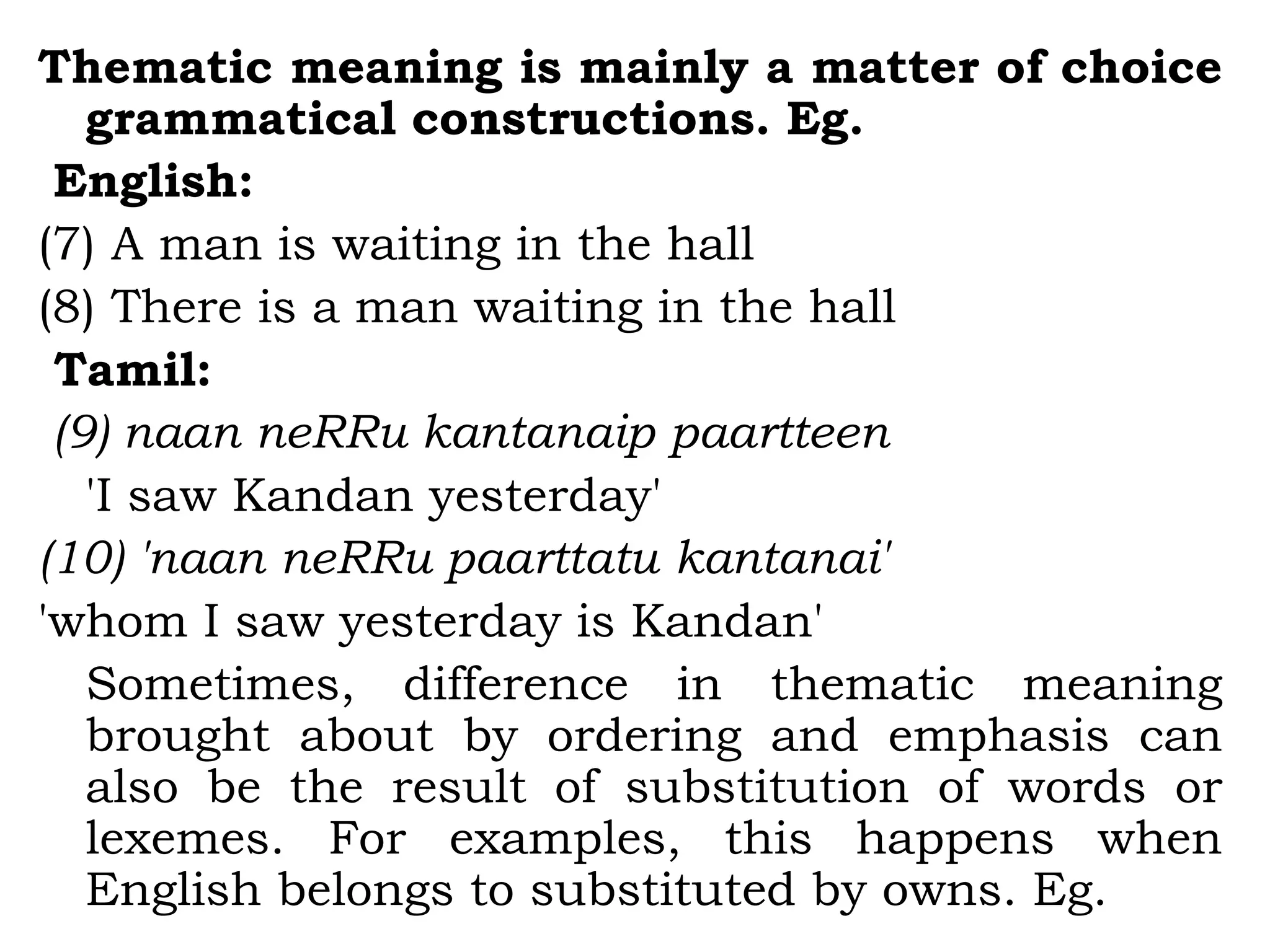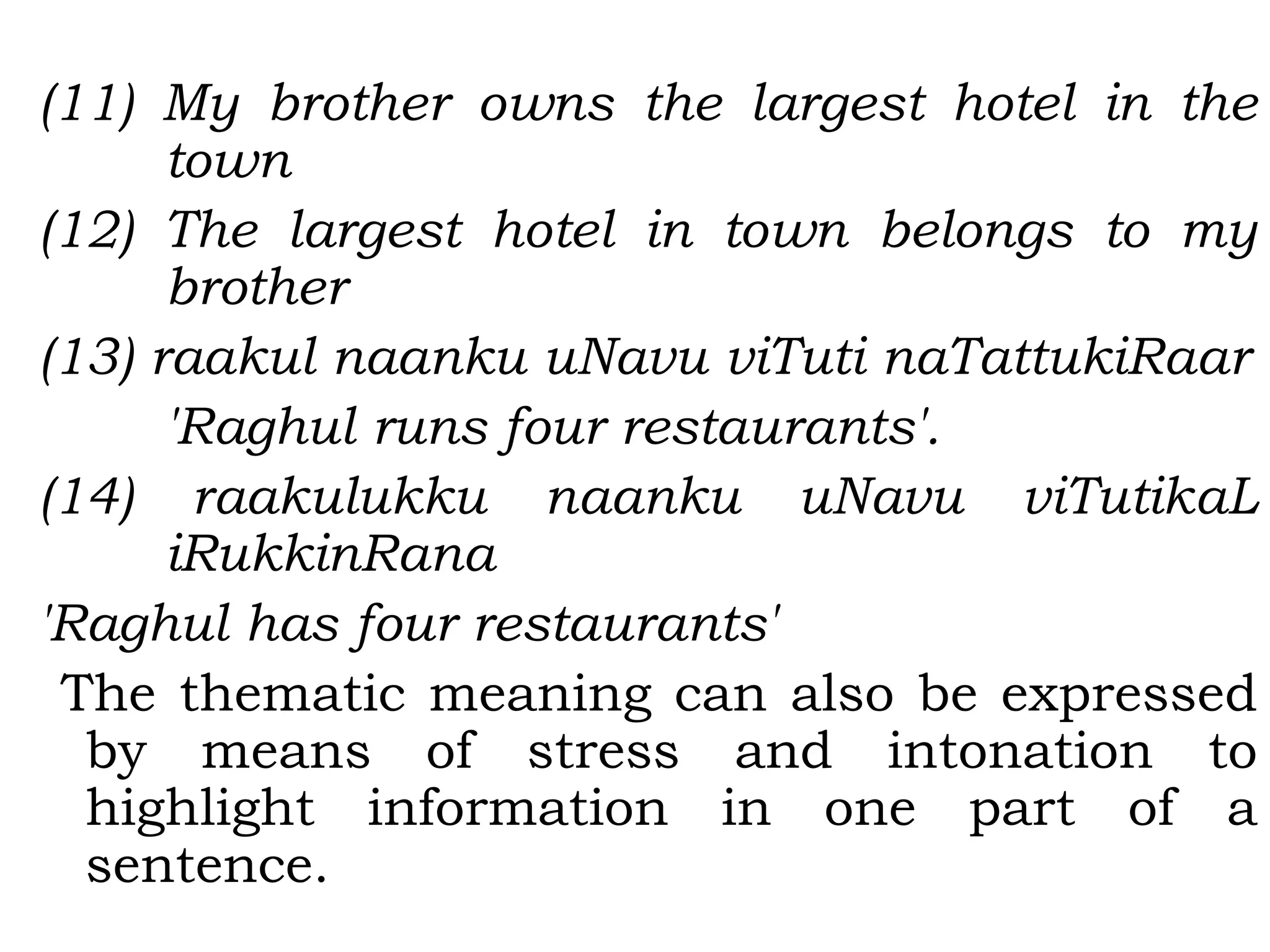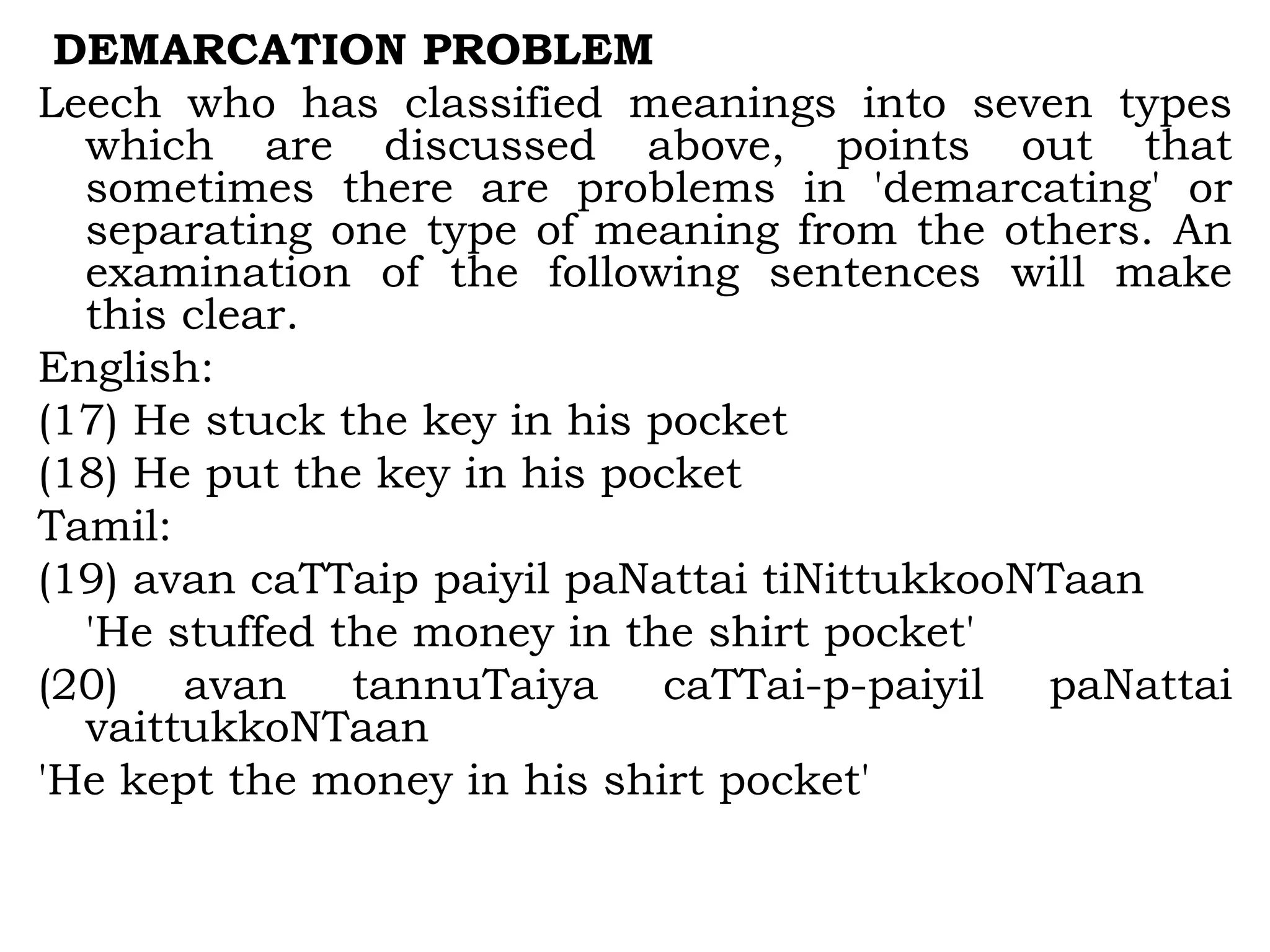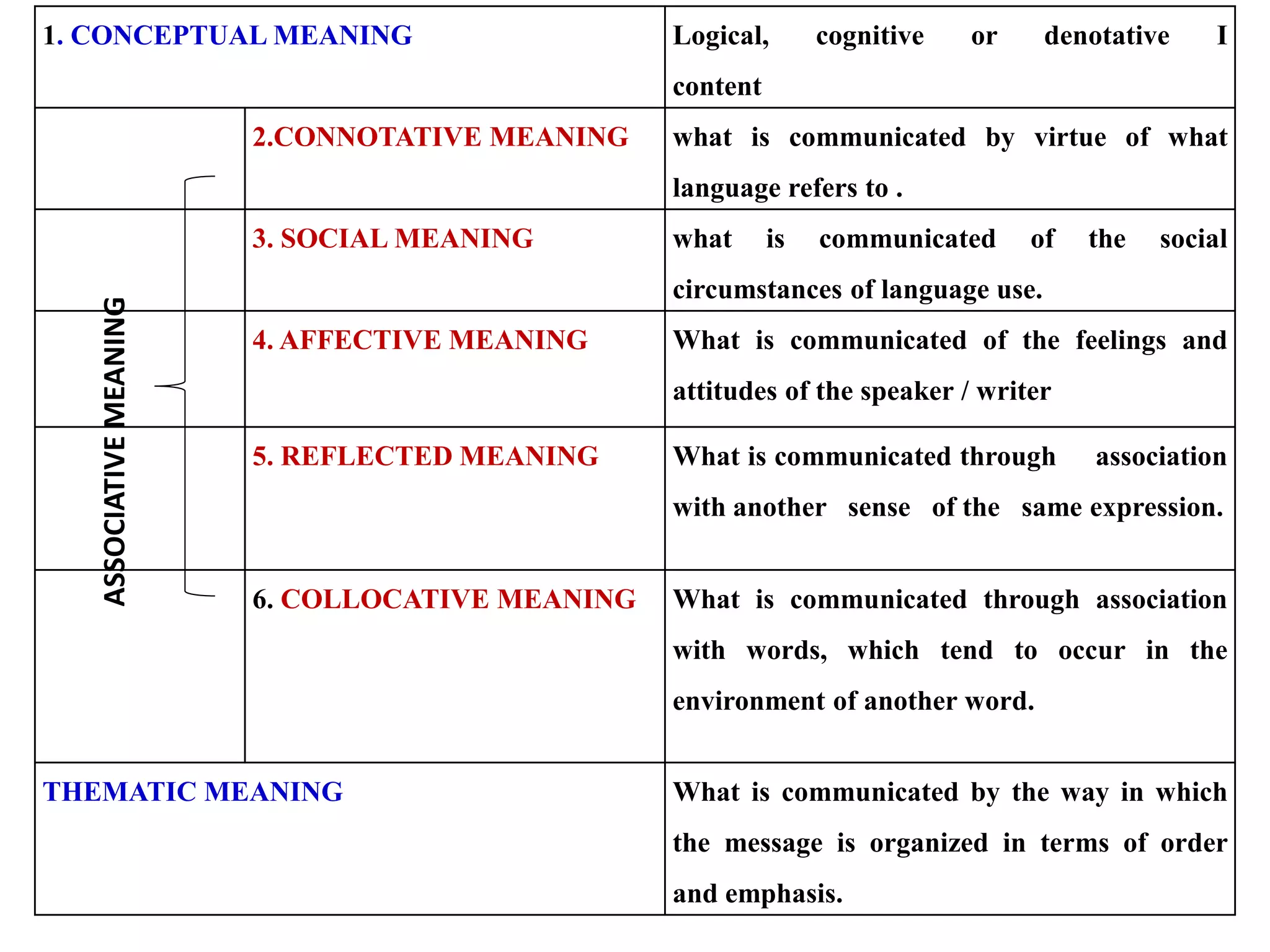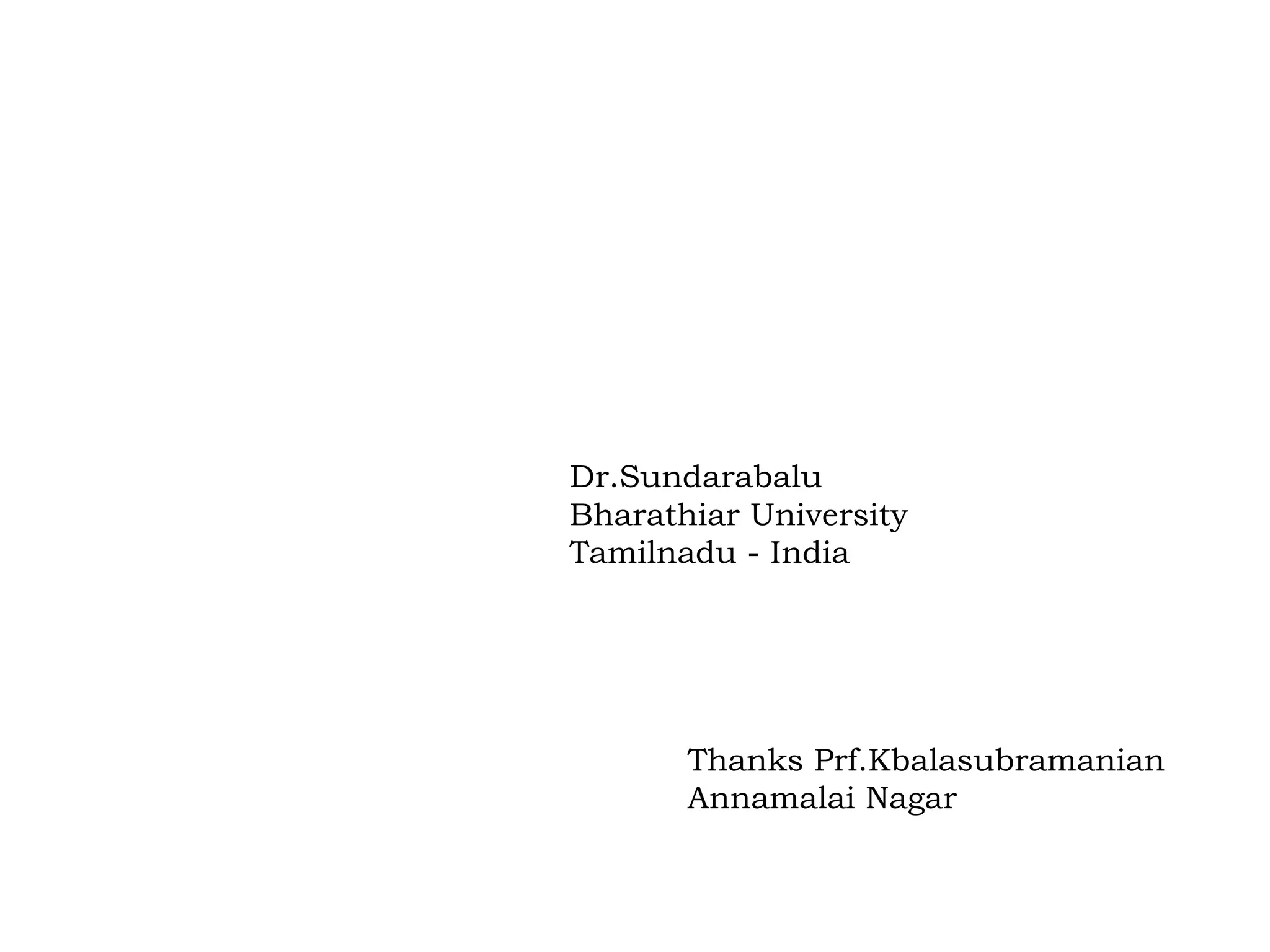The document discusses Geoffrey Leech's classification of meaning into 7 types:
1. Conceptual meaning refers to logical or denotative meaning.
2. Connotative meaning refers to aspects of meaning beyond conceptual content.
3. Social meaning refers to information conveyed about social context of language use.
4. Affective meaning refers to feelings and attitudes conveyed by speaker/writer.
5. Reflected meaning arises from association between multiple senses of a word.
6. Collocative meaning refers to associations from words occurring in similar contexts.
7. Thematic meaning refers to how organization, ordering, focus and emphasis convey meaning.






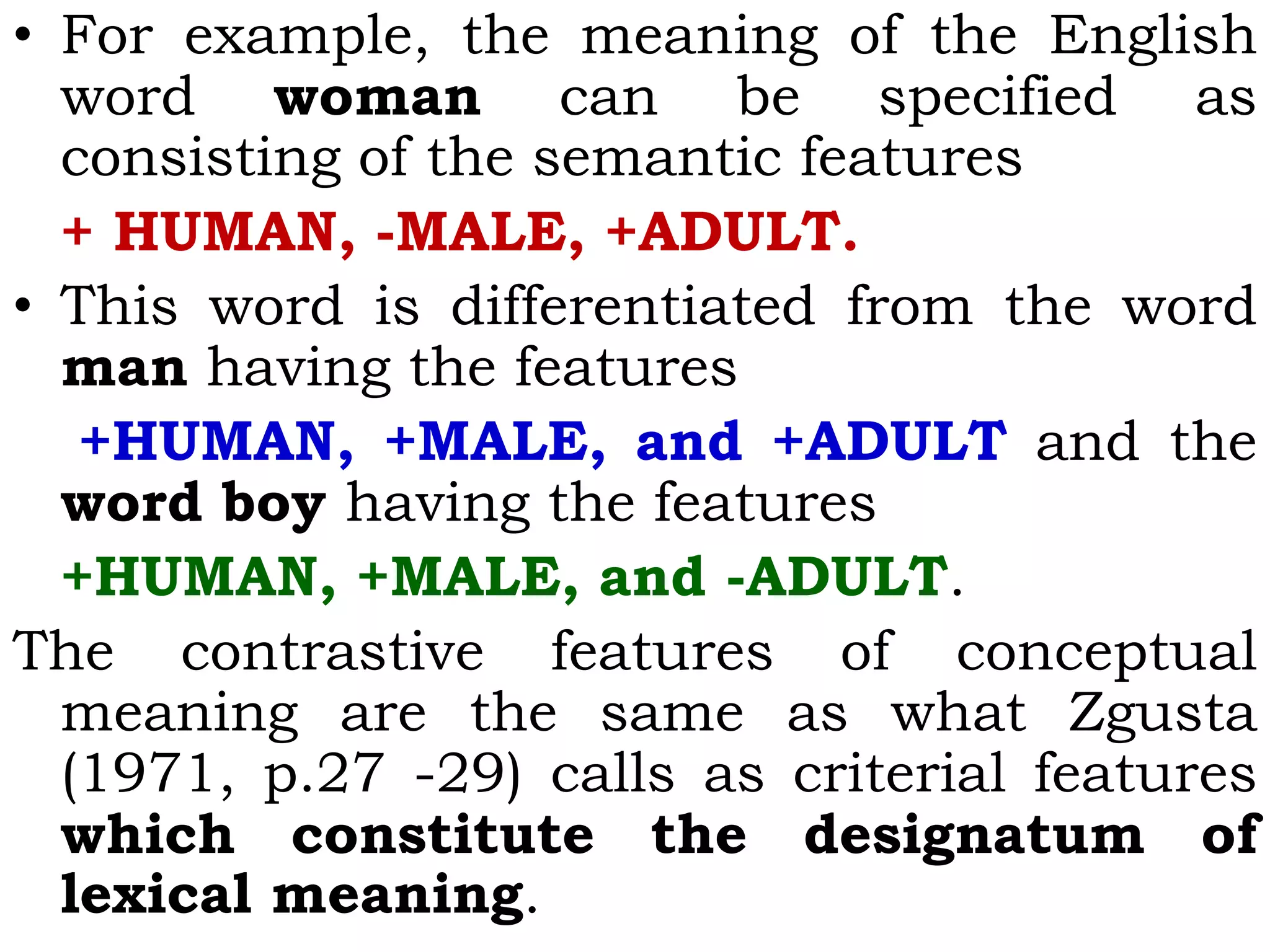
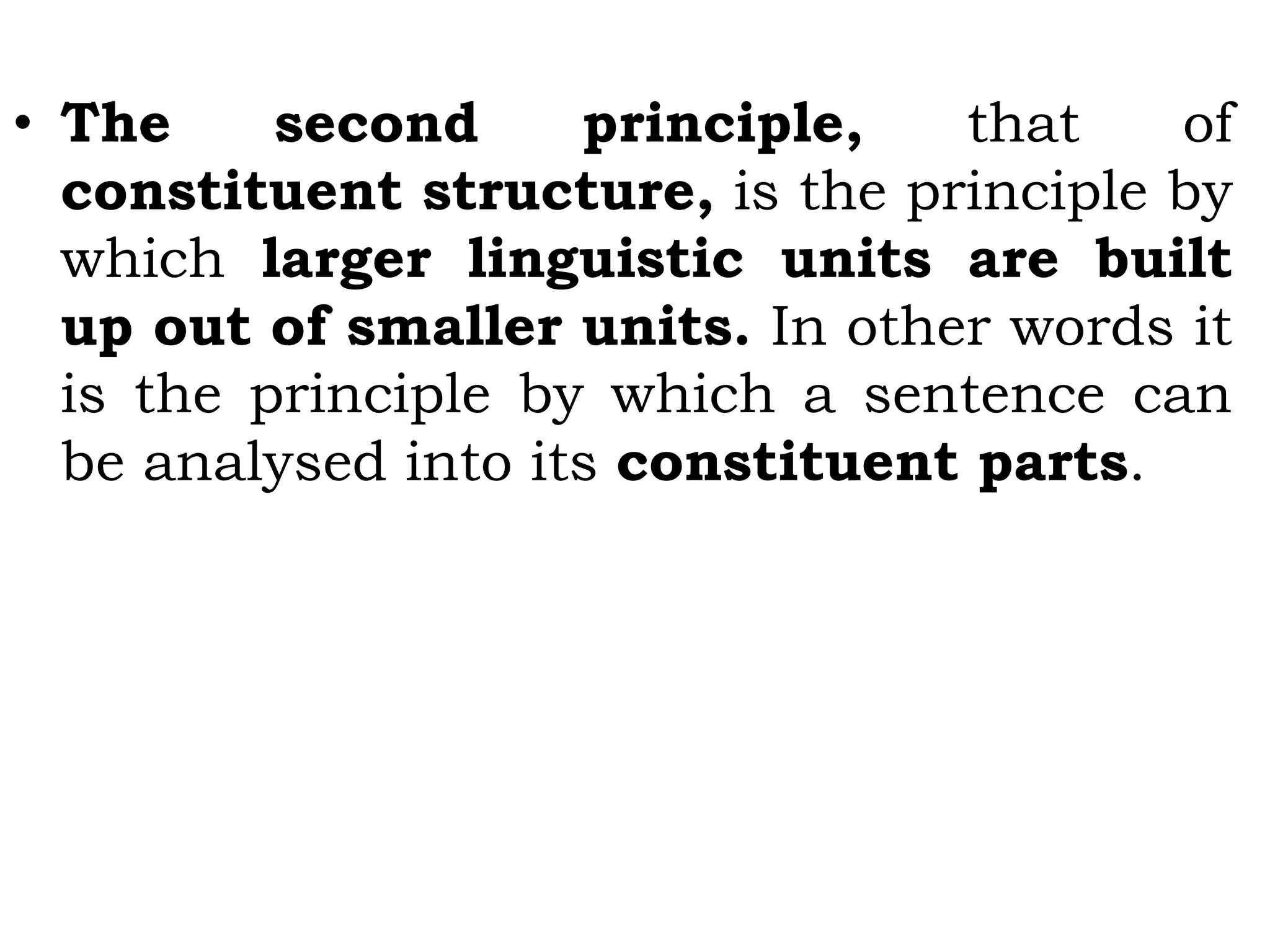
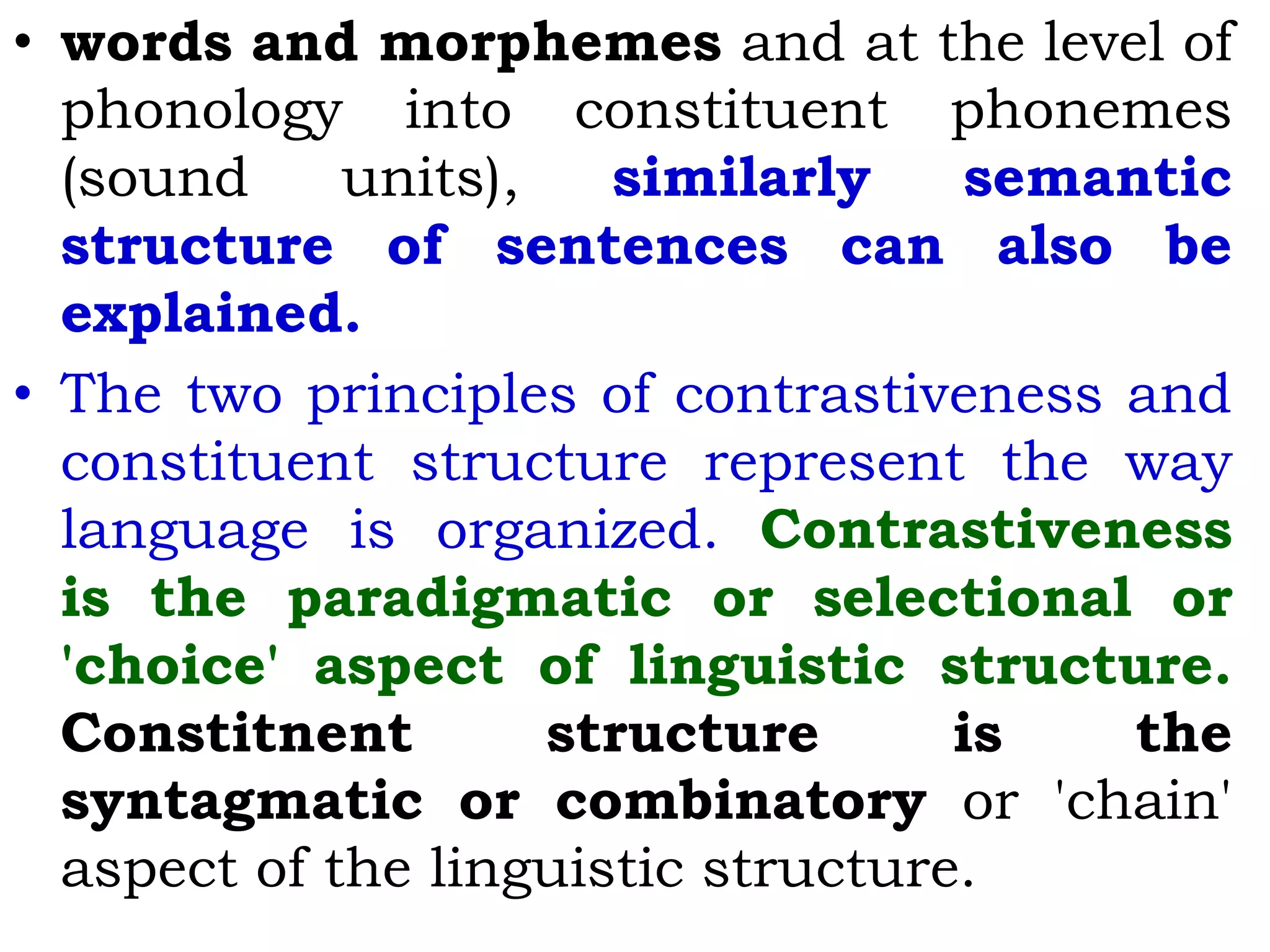





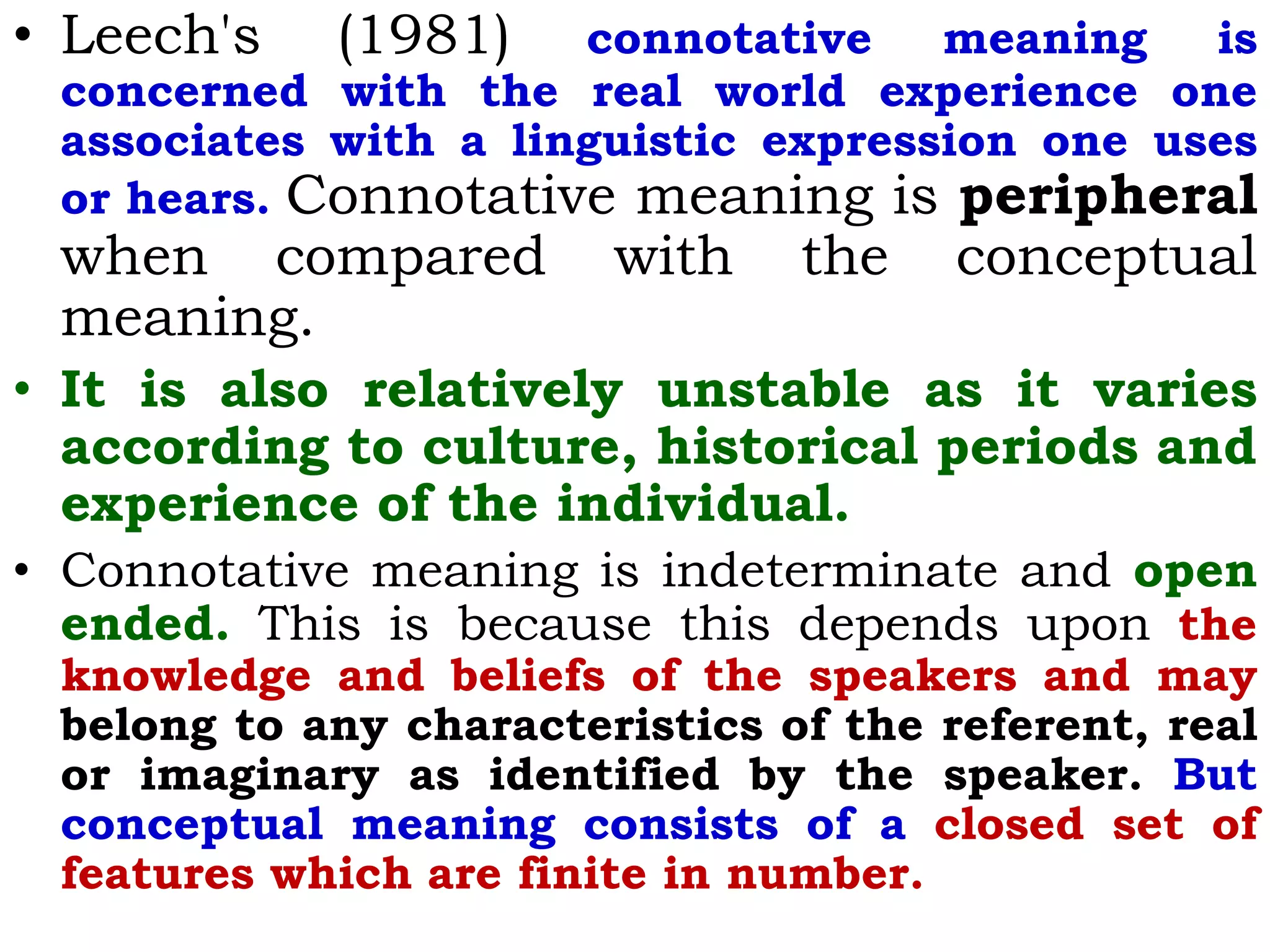



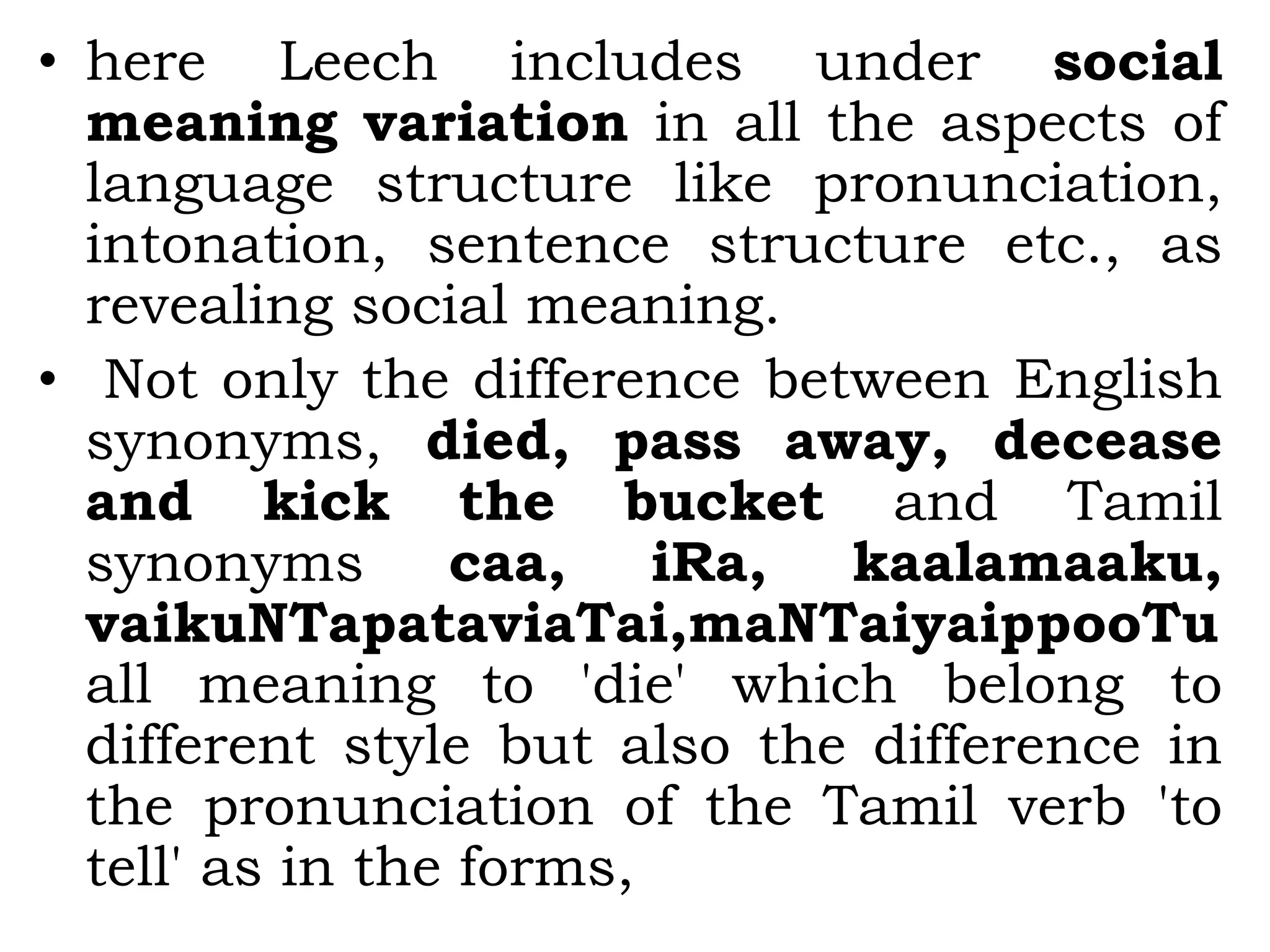
![[sonnă:] 'said he' (standard dialect)
[čonnă:) 'said he' (Dalit-speech)
[sonnă:) 'said he' (Kongunad dialect)
where stress (Dalit speech) and pitch variation (Kongunad dialect) mark
the dialect identity of the speaker belong to social meaning.
Under social meaning Leech (1981 ,p, 15) also includes" what has been
called the illocutionary force of an utterance: for example whether
it is to be interpreted as request, an assertion, an apology, a
threat etc". In a social situation a functional meaning of a sentence
may differ from its conceptual meaning due to its illocutionary force.
For example while eating at restaurant, if one says.
(1) I haven't got a knife
this sentence which has a form and meaning of an assertion, in social
reality it has the force of a request such as 'Please bring me a knife'.
In the Tamil social situation while eating at a wedding feast, when
someone says.
(2) pakkattu ilaikku paayacam pooTunka
'Please serve sweet liquid pudding to the next leaf (person)’it has the
implied social meaning 'Please serve sweet liquid pudding for me
also'.](https://image.slidesharecdn.com/leechsseventypesofmeaning-180723165020/75/LEECH-S-SEVEN-TYPES-OF-MEANING-20-2048.jpg)
